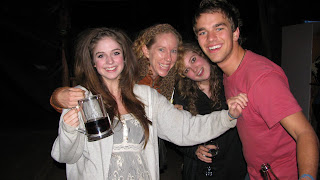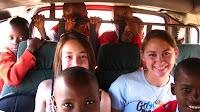I tasted: banana stew; fresh-squeezed passionfruit juice; ugali; chicken marsala, beef stew; tea with goat’s milk; dessert bananas the size of a lipstick; honey straight out of a hollow log; Kilimanjaro Premium Lager; African avocados; green oranges; home-brewed banana beer
I smelled: incense; clove spices; instant coffee; lemongrass tea; BBQ chicken with “secret” African spices; tiny chili peppers plucked from a bush; trash being burned in the dirt streets and gutters
I touched: mud squishing between my toes as I waded through a pond; countless handshakes and hugs from friendly Tanzanians; high-fives from children roaming school hallways; a gnarly Bao Bao tree; animals carved out of smooth teak wood
I heard: roosters crowing at all hours; a class of 4-yr olds clapping and singing a welcome song to me; a monkey telling others of my approach; crickets in the bush; enthusiastic church singing; a young child screaming after being bitten by a beetle; rain drops being caught in tanks to harvest water; Afro-Caribbean drumming; the rustling of critters in thatched roof huts; elephants trumpeting a warning
I saw: red, brown, and green coffee beans; cheerful sunflowers standing guard over rows of corn; hundreds of partially built houses waiting for more money to continue construction; bright pink pick-up trucks (driven by men); the President of Tanzania driving by with his entourage; men straining against the load they pulled on their carts; a bull elephant tossing a camping tent in the air
 Kwa heri (goodbye) Tanzania
Kwa heri (goodbye) Tanzania



















































